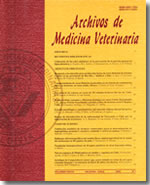Rumen microorganisms and fermentation
Main Article Content
Abstract
The rumen consists of a complex ecosystem where nutrients consumed by ruminants are digested by fermentation process, which is executed by diverse microorganisms such as bacteria, protozoa, and fungi. A symbiotic relationship is found among different groups of microorganisms due to the diverse nature of these microbial species and their adaptability and interactions also coexist. The ruminant provides the necessary environment for the establishment of such microorganisms, while the microorganisms obtain energy from the host animal from microbial fermentation end products. Within the ruminal ecosystem, the microorganisms coexist in a reduced environment and pH remains close to neutral. Rumen microorganisms are involved in the fermentation of substrates contained in thedietof the animals (carbohydrates, proteins and lipids). However, the fermentation process is not 100% effective because there are energy losses mainly in the form of methane gas (CH4), which is a problem for the environment since it is a greenhouse gas. In order to improve the efficiency of ruminant production systems, nutritional strategies that aim to manipulate ruminal fermentation using additives in the diet such as monensin, tallow, buffers, nitrogen compounds, probiotics, and others have been used. These additives allow changing the ruminal fermentation process in ways that produce better growth efficiency while decreasing energy loss. The purpose of this review is to contribute to a better understanding of the fermentation processes taking place in the rumen, providing information that can be applied in the development of new nutritional strategies for the improvement of the digestion process to achieve maximum production.

